Visit North Korea’s Border: What To Expect On a DMZ Tour from Seoul
Curious about North Korea? Well, the Demilitarized Zone, known as the DMZ (한반도 비무장 지대), is the closest you can safely get to the world's most mysterious country, without actually crossing the border. If you'll be visiting South Korea, a tour from Seoul to the DMZ should definitely be on your radar.
On a half-day tour in the Demilitarized Zone (DMZ), you can see North Korea from the Dora Observatory rooftop and explore a secret infiltration tunnel built by North Korea, while gaining insight into the history and legacy of the Korean War.
The DMZ holds the gripping, tragic, and recent history of the Korean Peninsula's division between North and South. Surprisingly, it's also become one of South Korea's hottest tourist spots, showing up as a top result for "Seoul tours" or "South Korea tours" on popular travel websites like GetYourGuide and TripAdvisor. In fact, before the pandemic hit, the DMZ used to welcome around 5,000 visitors every day! Even now, with stricter rules in place, it's still very busy, with 60 buses carrying 2,640 tourists daily as of August 2023.
So, should you hop on a DMZ tour when visiting Seoul, South Korea? What can you expect? How do you arrange a visit? In this blog post, I'll give you the lowdown on what to expect and answer the most common questions about visiting the Korean Demilitarized Zone.
Table of Contents
What is the Korean Demilitarized Zone (DMZ)?
The DMZ is a 250-kilometre-long and 4-kilometre-wide buffer zone that separates North and South Korea. Established in 1953 after the Korean War, this heavily fortified area represents an armistice agreement between the two nations. Basically, this means that they couldn't come to a peace agreement, so they established a buffer zone between the two warring nations. Still today, there is no peace treaty between North and South Korea.
Today, the Korean demilitarized zone is among the most militarized areas in the world, complete with military checkpoints, heavy surveillance, barbed wire fences, and a high concentration of nearly one million landmines (NPR's All Things Considered). The DMZ is administered by the United Nations with both North and South Korea and the presence of the U.S. military.
The village of Taesung, with a population of just 197, is technically located in the demilitarized zone but is fully administered by South Korea. These residents tend to agriculture here, mostly growing rice (Taesung Journal, NYT). You can buy their goods, like wine, chocolate and model ration packets, from one of the DMZ gift shops you'll surely encounter during your tour. Besides these villagers, tens of thousands of South Korean and American military personnel line the demilitarized zone.
What to Expect On Your DMZ Tour
In this section, I'll walk you through an average DMZ tour itinerary and share some helpful tips about timing and what to bring.
Your DMZ Tour Itinerary
There is a popular tour itinerary since tour providers are somewhat limited in where they can and cannot take tourists. Therefore, almost every DMZ tour from Seoul will follow a similar itinerary, give or take some stops and a different order.
The main difference is that some group tours stop at the Peace Gondola while others stop at the Majang Suspension Bridge. My friend Hannah and I opted for the tour with the Peace Gondola add-on, whereas my friend Nika, who went a few days later, did the tour with the Majang Suspension Bridge. We concluded that the tours were almost identical except for this stop, and we shared a similar positive experience with our GetYourGuide tours.
This itinerary information is based on my experience booking online with the DMZ tour called "From Seoul: DMZ Tour with Tickets and Optional Peace Gondola" with VIP Travel via the GetYourGuide app:
Pick-up Point in Seoul:
The app allows you to select a pick-up point. We chose the one by Hongik University metro station since it was just a few minutes from our Airbnb. The tour provider sent me a WhatsApp message the day before to confirm the meeting point and time. We had to be there by 8 AM, but the pick-up time will vary depending on your tour and meeting point. Our guide, Jenny, was easy to find at the meeting point.
Drive to the DMZ:
Our tour started on time and it was a short 45-minute drive from Seoul to the DMZ in a comfortable, air-conditioned coach. All large group tours will have both a bus driver and a tour guide. Your guide will tell you his or her name (or their "English name"), which will be written on a sign on the front of the bus, and everyone on the tour will wear a badge with that name to avoid leaving with the wrong group at any stop.
Imjingak Park and Tourist Information Center:
The first stop was in the large car park of this tourist information centre located about 7 kilometres from the border between the two Koreas. Here, our tour guide collected everyone's passports from the bus and went inside to queue to arrange a DMZ entry time for our tour bus. I know it may feel strange to leave your passport with your guide, but it is the normal procedure here.
Meanwhile, tourists are free to wander around, there is the Peace Bell on the rooftop, a gift shop inside, restrooms and some places to eat. Strangely, there is also a small amusement park next to the large parking lot.
Imjingak Park, built in 1972 to console separated families, is also located here and you can find a war memorial, a pond in the shape of the Korean peninsula, historical artefacts, the Peace Train and see Freedom Bridge, used by prisoners of war who were repatriated from North Korea.
Once our timeslot was confirmed, our tour guide met back up with us, returned our passports and gave us a new meeting time. Those who opted in for the Peace Gondola then had time to take it, as the entrance is also located there.
Paju Imjingak Peace Gondola:
The Peace Gondola is a short 850-metre-long trip which provides a view of the DMZ area over the Imjin River and U.S. Military Camp Greaves. Each gondola can board up to 10 passengers, but there was almost no one there the day we went, and we were alone in our gondola.
Once you get off the gondola, across the Imjin River, you'll be in a building with gift shops and cafes. When you exit the building, there are art displays and benches to the right, or you can walk up the hill to the museum. The museum was small but insightful.
Overall, the gondola was not particularly special, but it was a way to use our time while waiting.
Third Tunnel of Aggression:
This is where the tour got interesting for us. South Korea is aware of four partial tunnels that North Korea has dug beneath the border. The Third Tunnel, discovered in 1978 after a North Korean defector warned South Korea about it, is the only one near Seoul which is open to tourists.
Before entering the infiltration tunnel, your tour guide will show you some mockups so you can understand where exactly you are and what you'll be visiting. There is a DMZ exhibition hall with more information and images, as well as a theatre with a short video, to help deepen your understanding.
The tunnel has been altered and widened at some points to accommodate tourists today. Before going in, you'll have to put all of your belongings into a locker, including your purse, phone and any cameras. No photography or videos are allowed in the tunnel. Then, you'll get a hard hat and walk down the path.
NOTE: The tunnel is quite narrow and steep at some points, so it may not be for you if you're claustrophobic or asthmatic.
It starts with a purpose-made wide 358-metre pathway down into the tunnel. Then, you can walk the length of the tunnel, about 435 metres, situated 73 metres (240 feet) below ground. The tunnel itself is 2 metres wide and tall but the size varies throughout. I'm 5'9" and was happy to have the helmet because I hit my head quite a few times!
Going into the third infiltration tunnel after learning about how it was made really helps you sympathise with the plight of North Korean soldiers who were forced to create it without any modern technology - or basic labour rights.
Dora Observatory:
The bus driver then took us to Mount Dora where we walked up a small hill to Dora Observatory, which offers a panoramic view of the North Korean city of Kaesong and the propaganda "Peace Village."
While you can't see much detail with the naked eye, the scenic view from the roof of Dora Observatory is lush green. With the knowledge that this is an isolated country suffering greatly from poverty and hunger, it's also somewhat haunting to look at. Using the binoculars, and with the help of a good tour guide like Jenny, you can spot North Korean propaganda from here, like signs about how great North Korea is and gigantic statues of supreme leaders. You might also see military personnel at outposts or farmers at work.
With the binoculars available at Dora Observatory, our guide also helped us spot the two flag poles in the distance: a 100-metre-tall South Korean flag pole and just across the border a 160-metre-tall North Korean flag pole. Apparently, they battled to be taller than the other for years, until South Korea finally left it at 100 metres and North Korea kept going.
It was a beautiful day and Dora Observatory was our favourite stop on the tour.
DMZ Gift Shops:
The gift shops at your various stops in the DMZ Korea are kind of wild. As it turns out, the DMZ has some of the most fertile land in the Korean peninsula, and the farmers who tend to the land here are well rewarded for working in such a high-risk area.
The DMZ gift shops sell all sorts of unexpected goods produced in the area, including DMZ wine, chocolate, liquor, rice and soya beans. They even sell novelty "ration packets" or freeze-dried foods that imitate what soldiers would eat. You can also find all of the usual gift store items with DMZ written on them, like hats, t-shirts, mugs, etc. The home-grown products are one thing, but I can't imagine sporting a t-shirt from a war buffer zone!
Our final stop was at a rest area so we could grab a bite to eat, try popular soy ice cream, and of course visit another gift shop.
Drop off:
Finally, the bus driver drove us back to Seoul, and each person's drop-off point was the same as their pick-up point, so we got off at Hongik University metro station around 2 PM and went for lunch in that area. Admittedly, we were quite hungry because there wasn't a dedicated lunch stop on our tour.
What to Bring on Your DMZ Tour
Once you select and book your DMZ tour, don't forget that:
You must have your passport on you in order to visit.
You can bring a camera, however, note that there will be places where you will not be allowed to use or bring your camera - particularly at military checkpoints and in the infiltration tunnel.
You should bring snacks (or buy some from a gift shop) because the wait times could be somewhat unpredictable.
Otherwise, bring your wallet, wear comfortable walking shoes and appropriate clothes for both hot weather and visiting war memorials.
READ NEXT:
DMZ Tour Timing: What You Should Know
Once you book your guided DMZ tour, you should know a few important things about timing:
Meeting Point in Seoul: You must arrive at your meeting point for pick-up in Seoul 10 minutes before departure.
DMZ Entrance: Your exact entrance time to the Korean Demilitarized Zone will only be confirmed on the day of your tour by your tour guide. All tour groups are subject to specific entry slots on a first-come-first-serve basis. So, expect to have to wait around for some time.
Order of Visit: Your tour likely includes different stops, like the third infiltration tunnel, the Dora Observatory, etc. Since the timing of entry to the infiltration tunnel is subjective, your tour guide may change the order of what you visit to make the best use of your time.
Overall, listen attentively and respectfully to your tour guide. They know from experience how to move smoothly through the checkpoints and how to make the most of your DMZ tour.
How To Choose Which DMZ Tour To Book
If you're booking a regular DMZ tour from Seoul, then I definitely recommend you book online with GetYourGuide as they have proved reliable to me over years of travel. They also offer free cancellation on most DMZ tours up to 24 hours ahead, which provides you with good flexibility in tour date plans.
Note that, on average, your DMZ visit will be a half-day tour - leaving around 7-8 AM and returning around 1-3 PM, as it really depends on your DMZ entry time which is determined on arrival at the tourist information centre. So even if it's considered a "full day tour" at 6-7 hours, you'll likely be back (but tired!) by mid-afternoon.
Whether you choose the DMZ Tour with the Peace Gondola or the DMZ Tour with Suspension Bridge, they are about the same in the end, just one different stop. It seems that all DMZ tours include Dora Observatory and the third tunnel, which is good because these are the most interesting stops.
You can also consider a half-day tour that includes meeting a North Korean defector for a more interpersonal experience.
Finally, if you have flexibility with your travel in Seoul, you can consider the more difficult-to-book, but unique, experience of a guided tour to the Joint Security Area (JSA) - you can find more information on that below.
Book Your DMZ Tour from Seoul, South Korea:
Common Questions About Visiting the Korean Demilitarized Zone (DMZ)
In this section, I'll answer some frequently asked questions about visiting this enigmatic North and South Korean border region, such as who can go and how, whether it's dangerous and ethical, and more.
-
The DMZ Korea is open to visitors as a half-day tour from Seoul. It does, however, close on public holidays, so be sure to check before booking. Your best bet is to communicate directly with your tour provider on GetYourGuide so they can advise you based on your trip dates.
Civilians and tourists are allowed at the Korean Demilitarized Zone (DMZ) and there are no special requirements to visit besides booking with an approved tour agency and guide - and you must bring your passport!
-
I felt completely safe on my tour, as did my friends who visited. The DMZ is heavily regulated and I understand that the South Korean government regularly checks and establishes rules and limitations to ensure safety.
The North and South have had an armistice since July 1953. An armistice is not a peace treaty, which means technically the countries never came to an agreement to end the war. There is ongoing political and military tension today, however, these are not really felt when you visit the beautiful and modern capital city of Seoul, just 50 kilometres from the DMZ.
-
Sort of. While it isn't an admission ticket, you need to be part of a guided tour from Seoul, the capital city of South Korea. In any case, these tours offer convenience and provide insightful information throughout the journey.
Generally, DMZ tours are done as a half-day tour from Seoul, however, you can also find options for a private, half-day tour if you're with a small private group and willing to pay almost double. Make sure to book your tour date in advance, as availability may vary.
I recommend you book online through GetYourGuide for reliably good service and fair prices.
-
A regular DMZ half-day group tour will cost between $50-90 USD, depending on the tour and add-ons you choose. Of course, any multi-day Korea tour, semi-private tour or Joint Security Area (JSA) tour will cost you significantly more.
I recommend you book online through GetYourGuide for reliably good service and fair prices.
-
No, you cannot visit the DMZ on your own. You can only visit by booking with a recognised tour provider from Seoul, as elaborated above.
There are options to book a private tour if you prefer.
-
Yes, but you need to book a specific tour from Seoul to visit the JSA, and they are very limited.
The Joint Security Area (JSA), also sometimes referred to as Freedom Village, Truce Village or Panmunjom, is the only part of the DMZ where soldiers from the two Koreas stand face-to-face. It's also where official diplomatic meetings take place. For example, when U.S. President Donald Trump visited North Korea's Chairman Kim Jong Un, they met at the JSA. That's also where Donald Trump became the first-ever President to cross the border into North Korea.
There are a very limited number of tours that take civilian visitors to the JSA. I found one company, VVIP Tours, which offers a JSA DMZ tour from Seoul for up to 40 people. However, they can only take visitors there 2-6 days per month and the schedule is usually only released the month prior, making it difficult to book if you're visiting Seoul for a short time.
The JSA tours are booked on a first-come-first-serve basis, so you have to keep checking their website to find an opening.
-
No. You will not cross into North Korea at any point during the DMZ tour.
You will have ample views of North Korea from the Dora Observatory and you will come very close to the buffer zone which separates North and South Korea, especially during the visit to the third tunnel of infiltration underground, where you will see it. However, you cannot cross the DMZ border.
-
This is a great question to ask. I personally don't have qualms with DMZ tours. There is a fascinating and tragic history of the Korean peninsula which I think is important for people to learn about.
We often take our freedom for granted and forget about a lot of modern history that affects people deeply today, divides families and, in the case of North Korea, engraves poverty. It was both interesting and heartbreaking to learn about how South Koreans try to help their Korean brothers and sisters in the North.
My tour guide shared that from the 1990s to today, you can find 33,000 North Korean defectors in South Korea. For the odd North Korean defector who makes it to South Korea, the country apparently offers numerous benefits to help them start a life in South Korea, including $25,000 USD, access to education, a job and 5 years of housing. My tour guide also said that she doesn't feel that many North Koreans live happy lives even when they defect, because of what they experienced and the guilt of leaving people behind. It makes you think about how living on the South Korean side must fill Koreans with both grief and gratitude.
For visitors, a half-day tour from Seoul can help unravel some of the emotional tolls of a divided nation through learning about Korean War history and legacy. It helps tourists understand the very real human elements of the separation of the Korean peninsula, particularly the separation of families, and the unimaginable social impact on North Koreans today.
-
At the time of writing, the DMZ accepts 60 tour buses with 2,640 visitors per day - and tours are often at capacity. There is no doubt that interest in visiting and understanding Korean history is strong.
The reason why my travel companion and I took a DMZ tour was because we were interested in learning more about Korean history and the Korean War, and especially because we were curious to better understand the ongoing legacy and impacts of the war.
We were curious about how it even works to live side-by-side in a country with such high tensions and recent war history.
Besides, visiting the DMZ is the only way to safely peer into one of the most mysterious countries in the world: North Korea. I think it's perfectly natural to feel curious about seeing this country, even from a distance.
Visiting the demilitarized zone allows visitors to gain a deeper understanding of the complex history and strained relations between North and South Korea. A DMZ tour from Seoul is a way to see and feel some of the history and modern-day tensions.
-
From Seoul, it took only about 45 minutes to drive to the demilitarized zone border. It was pretty shocking to realise that one of the world's poorest, most mysterious, provoking and oppressive countries is such a short distance from one of the most modern capitals I have ever visited. Seoul has seen a remarkable amount of development in the last twenty years.
According to SFGate, the reason why Seoul is so close to the DMZ is because it was actually occupied by North Korea from 1950-1953, during the Korean War. As the Cold War went on, the boundaries were pushed, but only slightly - which is why today Seoul sits roughly 50 kilometres from the North Korean border. According to Britannica: "The present boundary of Seoul is largely that established in 1963 and encompasses an area about twice what it was in 1948."
-
Yes, you cannot visit the DMZ without a valid passport.
Passports will be used by your tour guide to register visitors and will be checked by military personnel at the United Nations Command (UNC) checkpoints.
Is the Korea DMZ Tour Worth It?
Yes, absolutely. The demilitarized zone (DMZ) should be part of the Seoul tours or itineraries you create when visiting South Korea's capital. If you have any interest in understanding modern-day Korea, Korean history and the Korean War, curiosity about North Korea, or even just understanding conflict and peace, this tour will help give you unique insight and perspective.
That said, it is definitely a very commercialised experience. In the average group tour, you'll be with 20-40 other tourists, following directions from your tour guide, and understandably limited in what you can see and do. Still, it is the only way to experience the DMZ and it is the closest I felt to experiencing and feeling the legacy that is the separation of North and South Korea. It was thought-provoking and helped me expand my understanding of peace and conflict, and I am grateful for that.
Overall, the DMZ offers a strange and complex blend of tourism, history, culture and emotion. Don't be disheartened by the heaviness of the topic at hand - a day in the DMZ, surrounded by lush green landscapes, is pleasant and is a great opportunity to understand, reflect, and share hope for reconciliation.
KEEP READING TO PREPARE FOR YOUR TRIP TO SOUTH KOREA:
HEADS UP: Some links on Travelynne are affiliate links, meaning I earn a small commission if you purchase select experiences from my links. This helps me invest more time and resources into creating helpful travel content like this article. Learn more about my offerings and how to support Travelynne on my booking page, where you can book tours, transportation and accommodations.
Information and especially prices and price conversions are provided to help you with trip planning and research, but of course are subject to change.
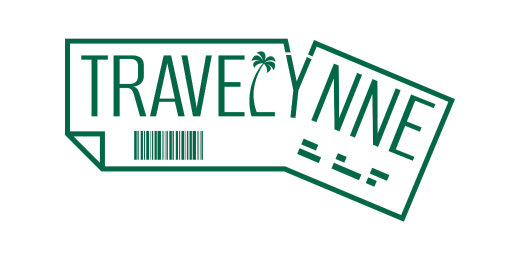

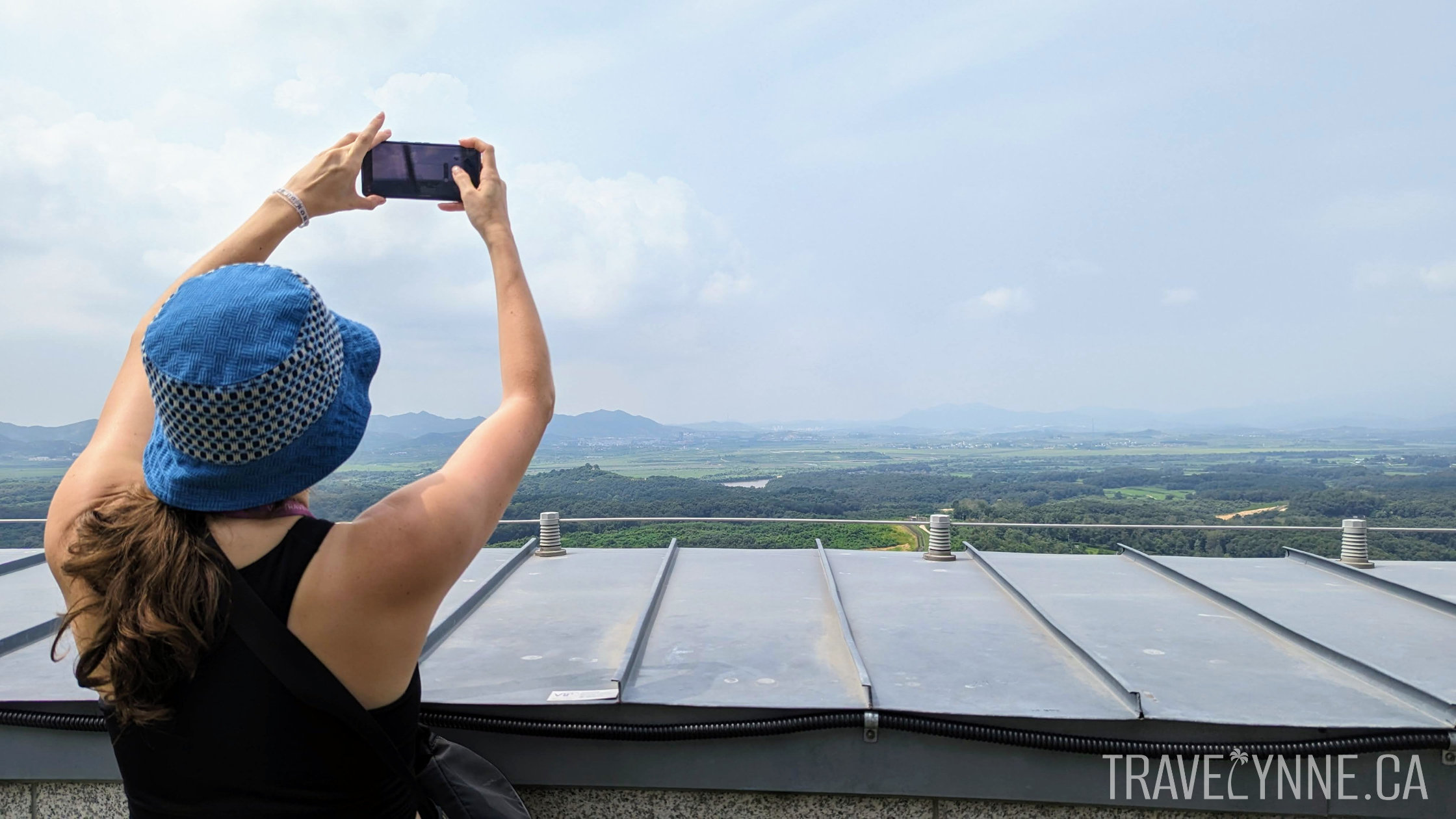

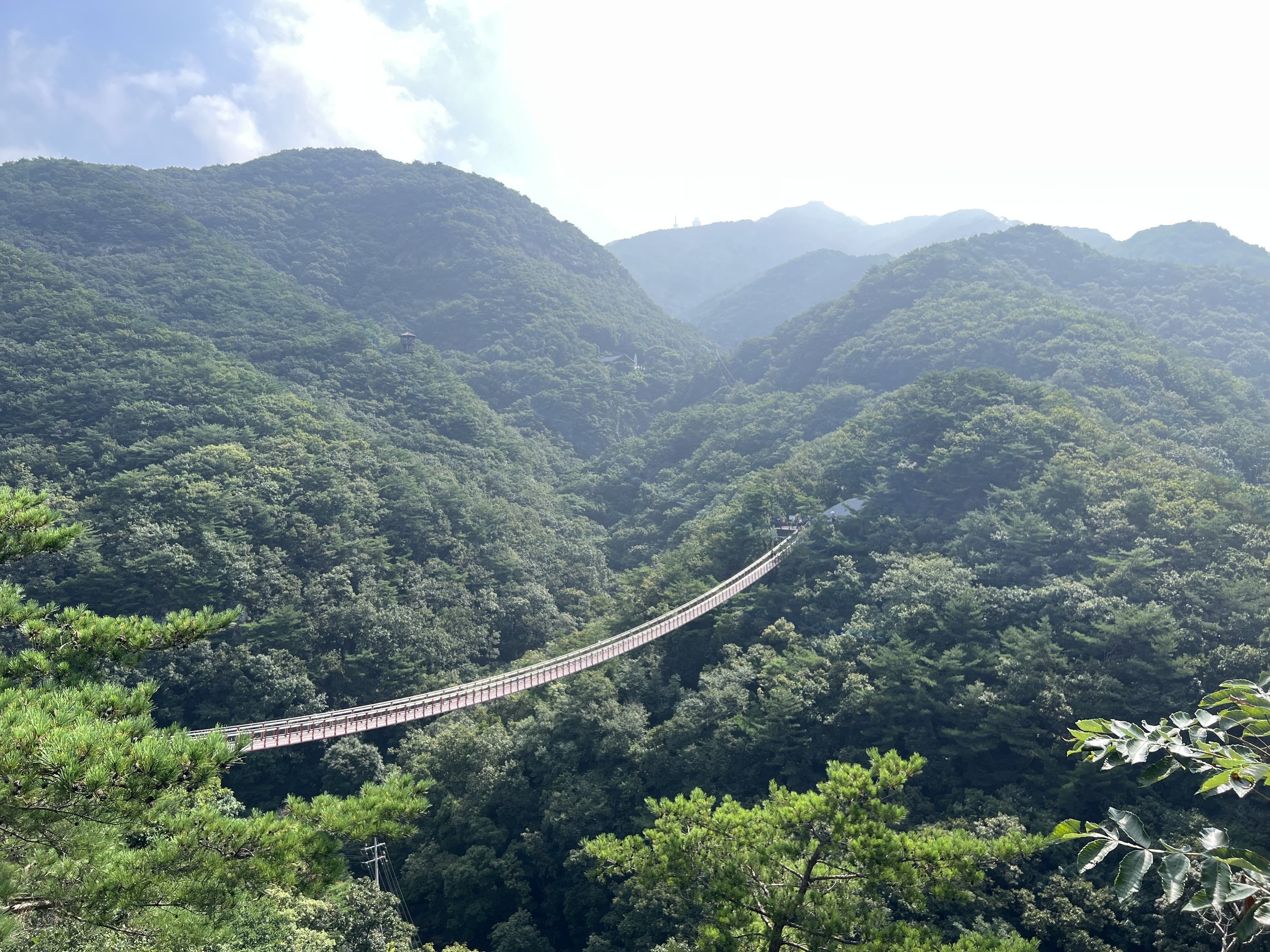



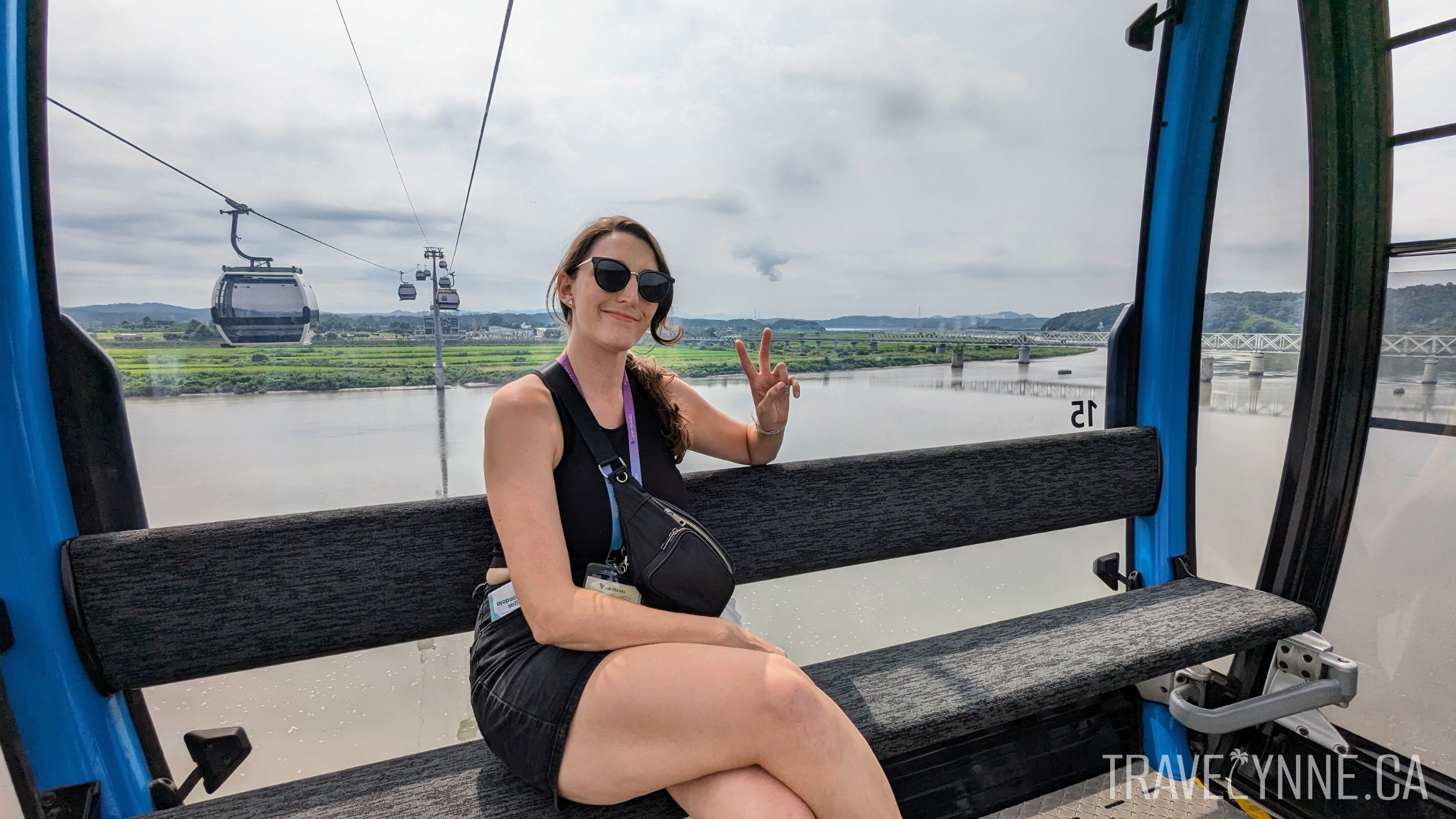
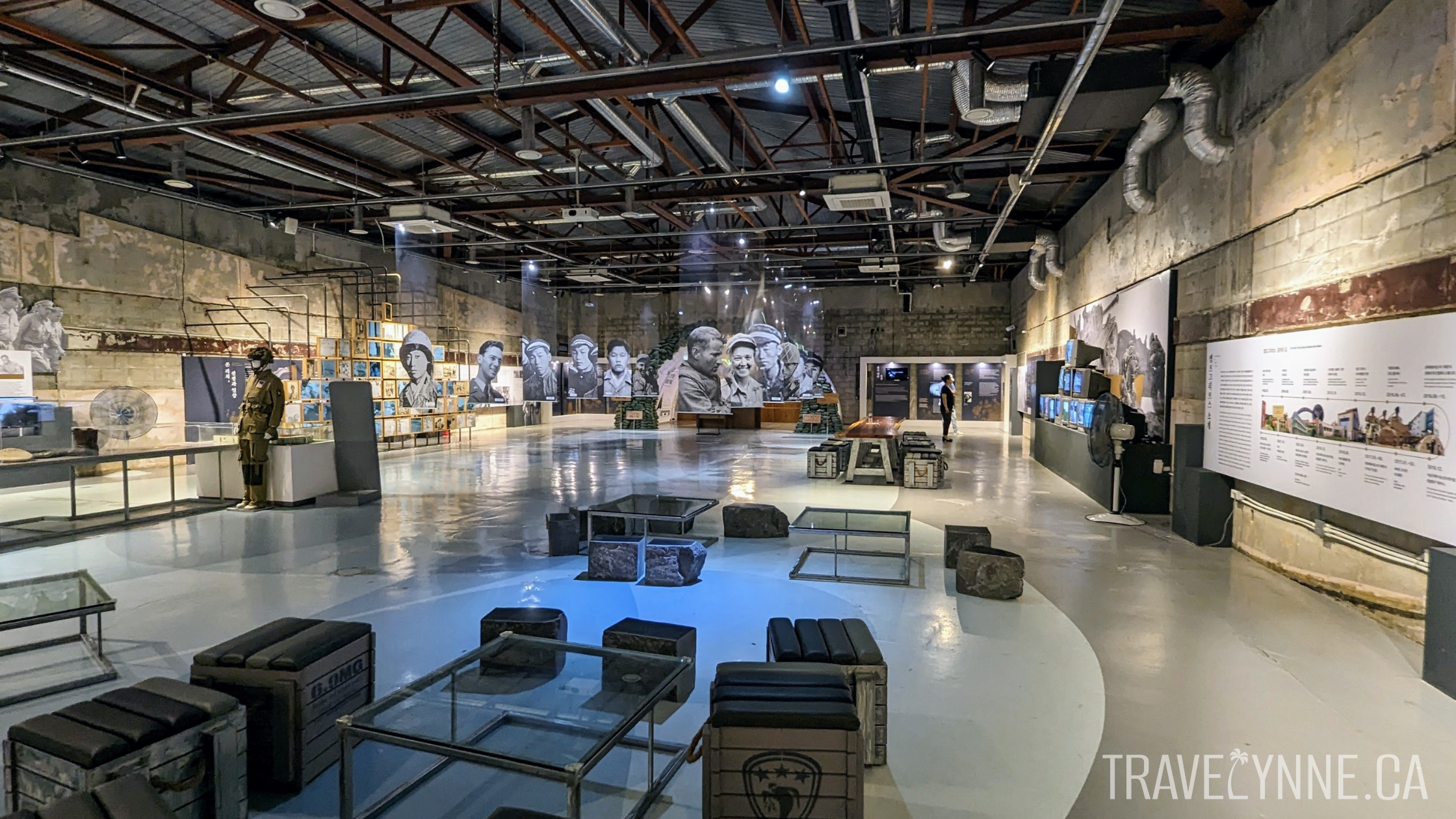
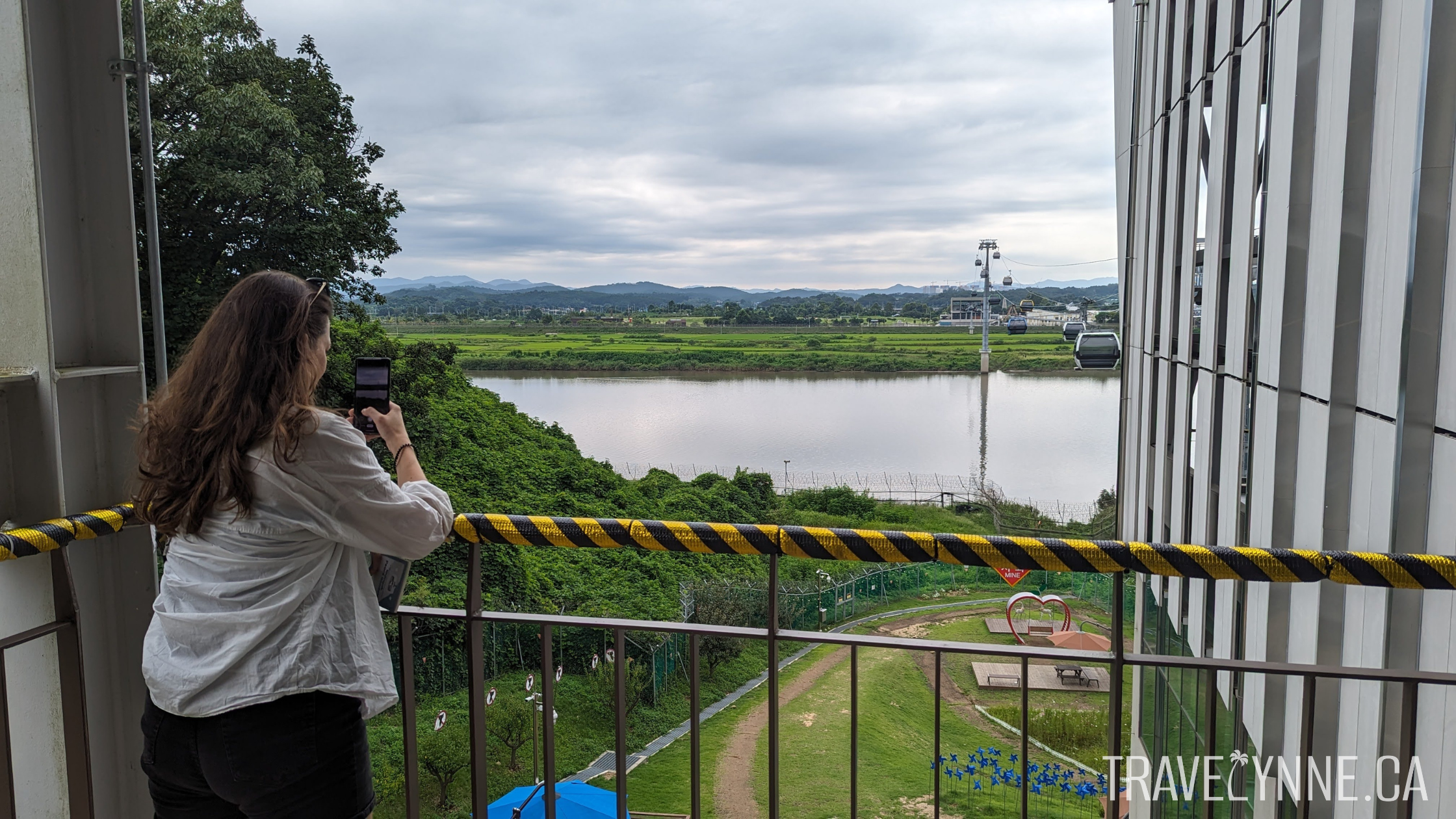
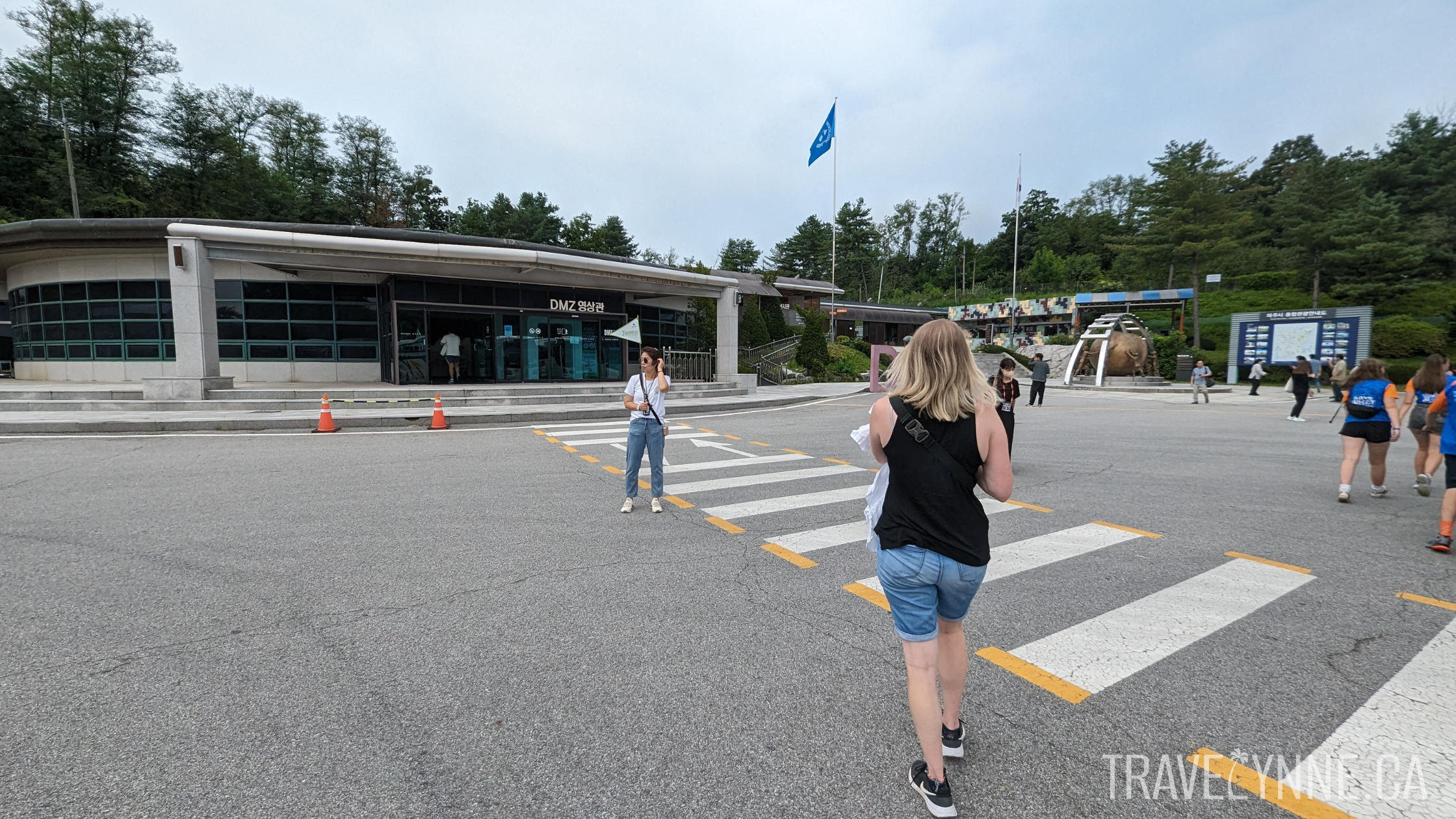
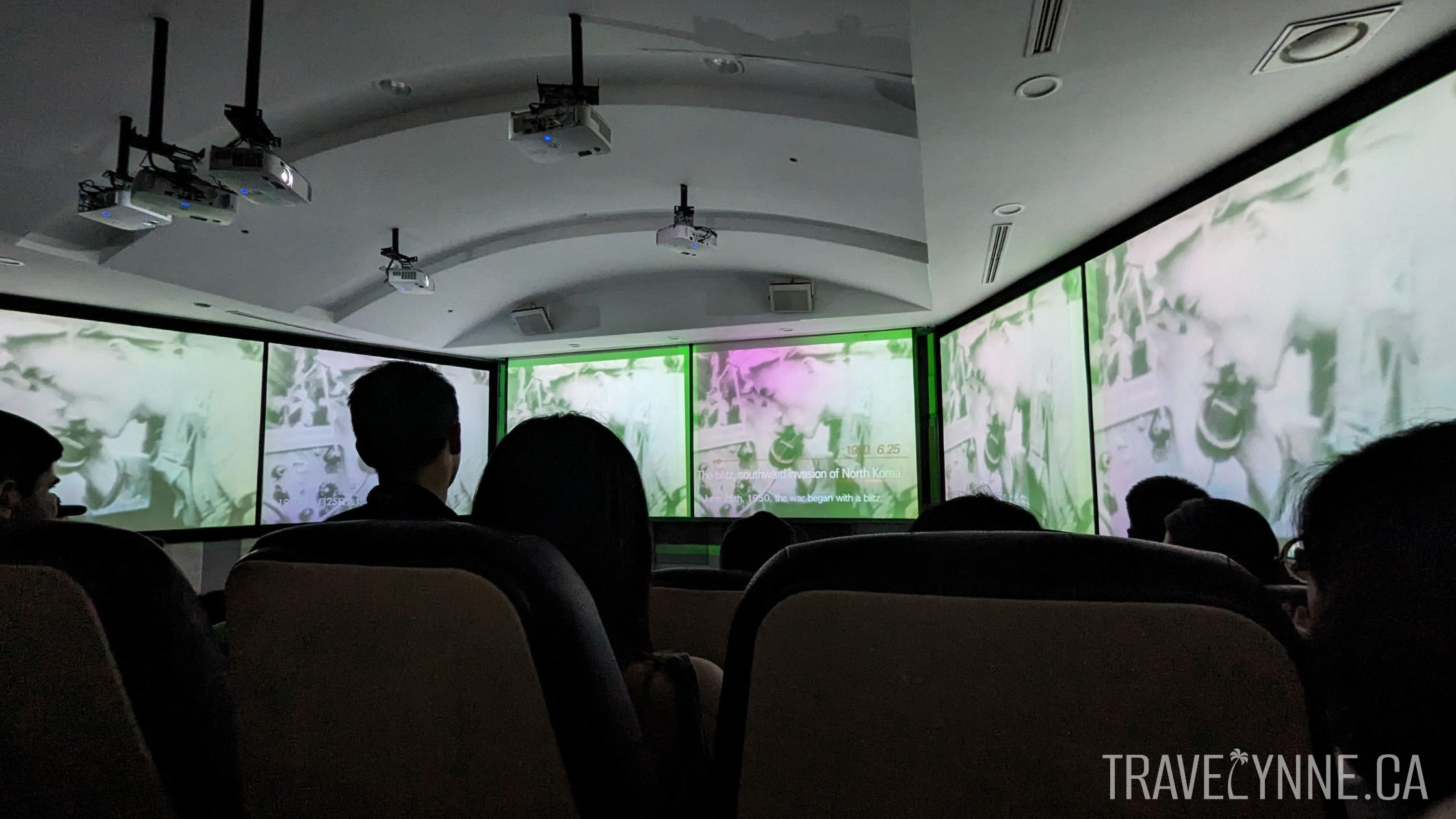
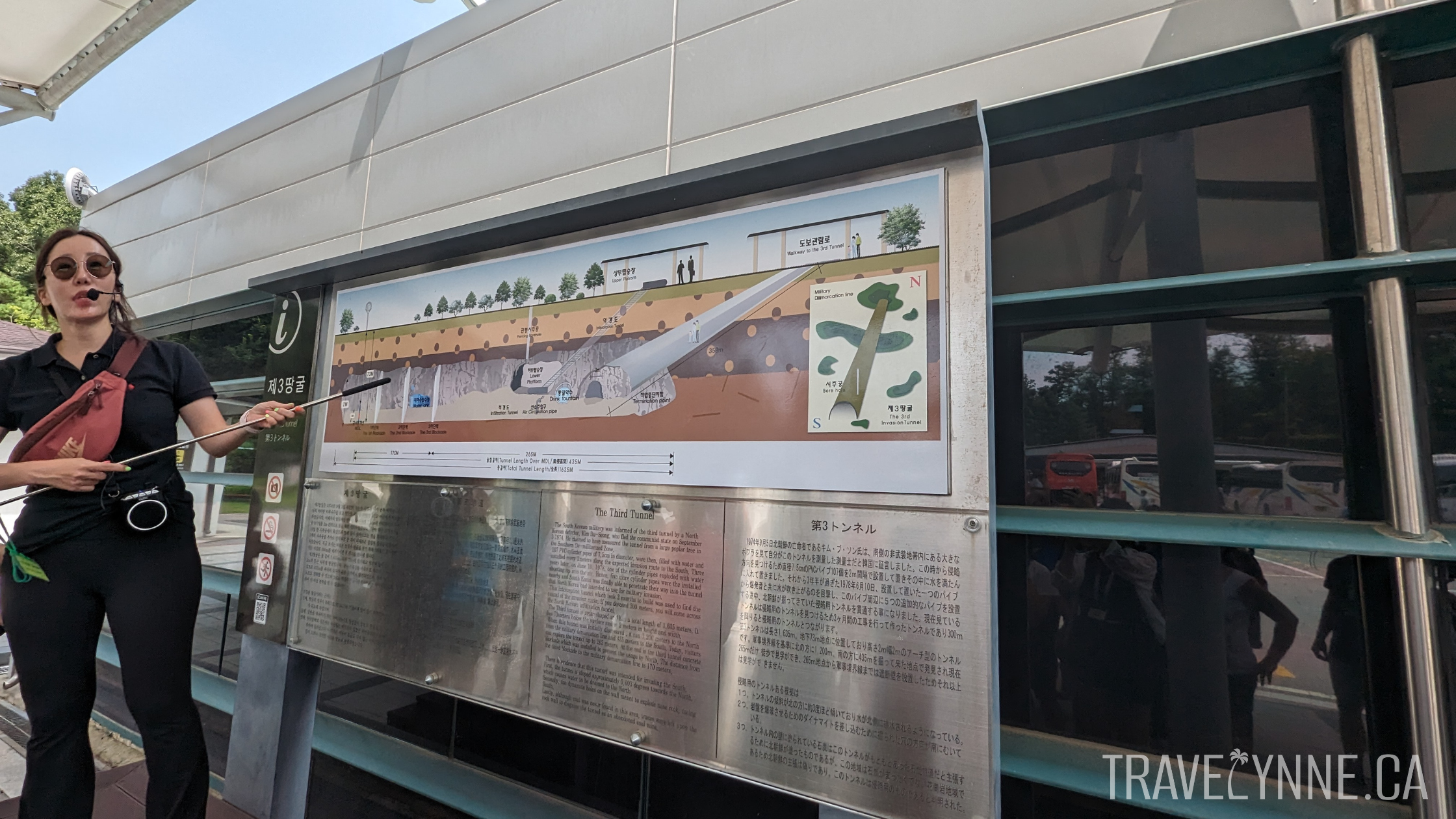
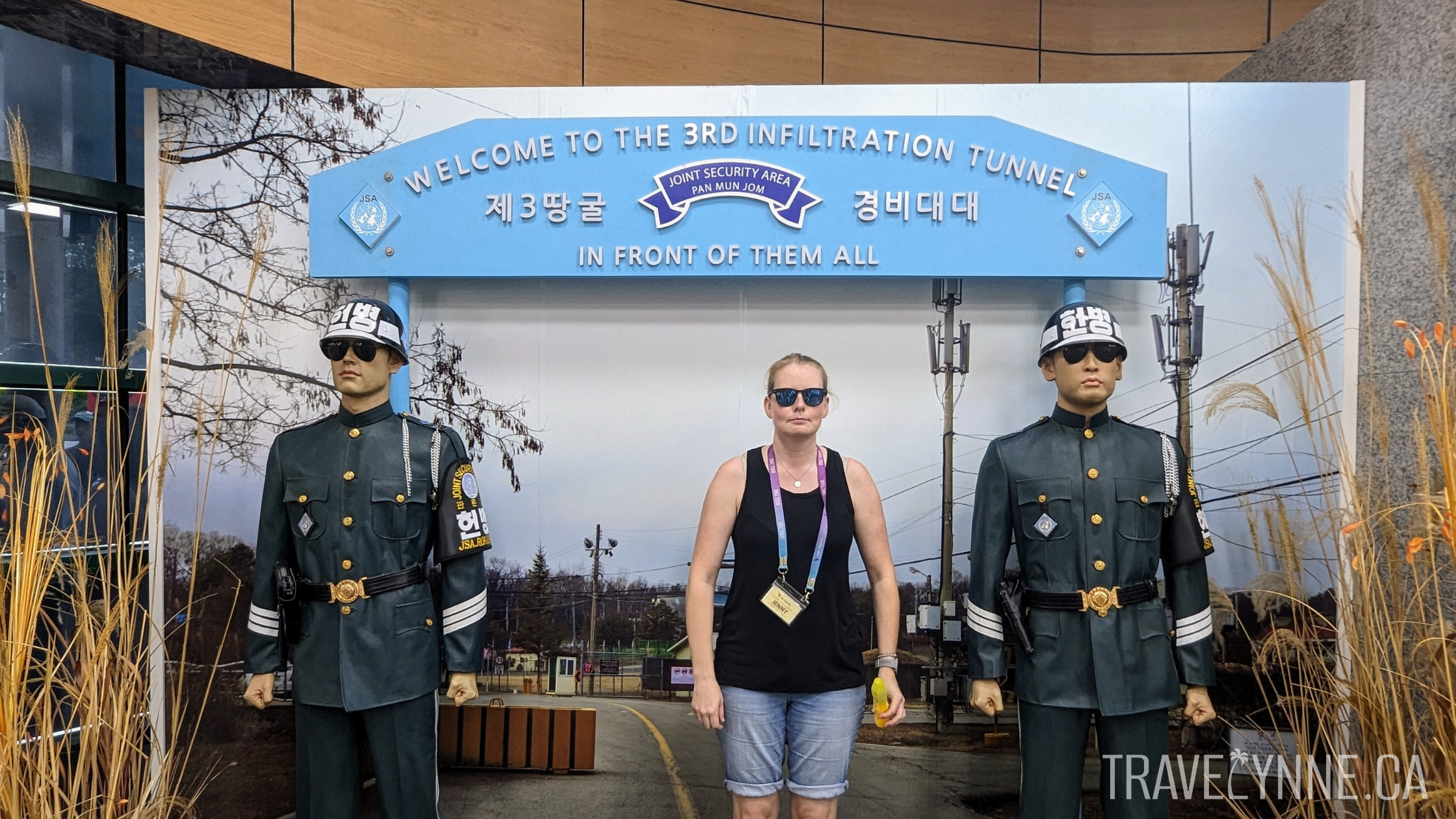

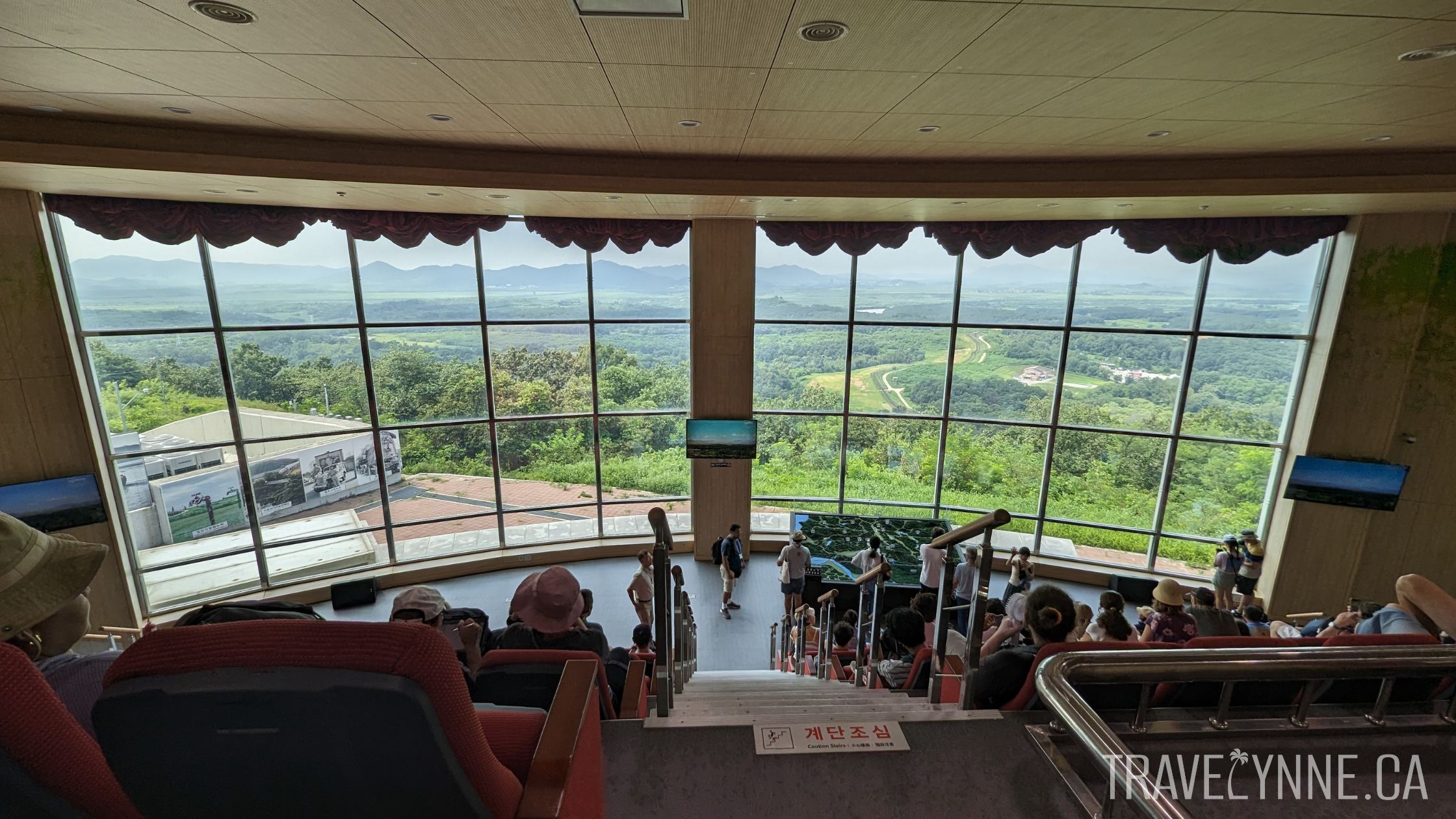
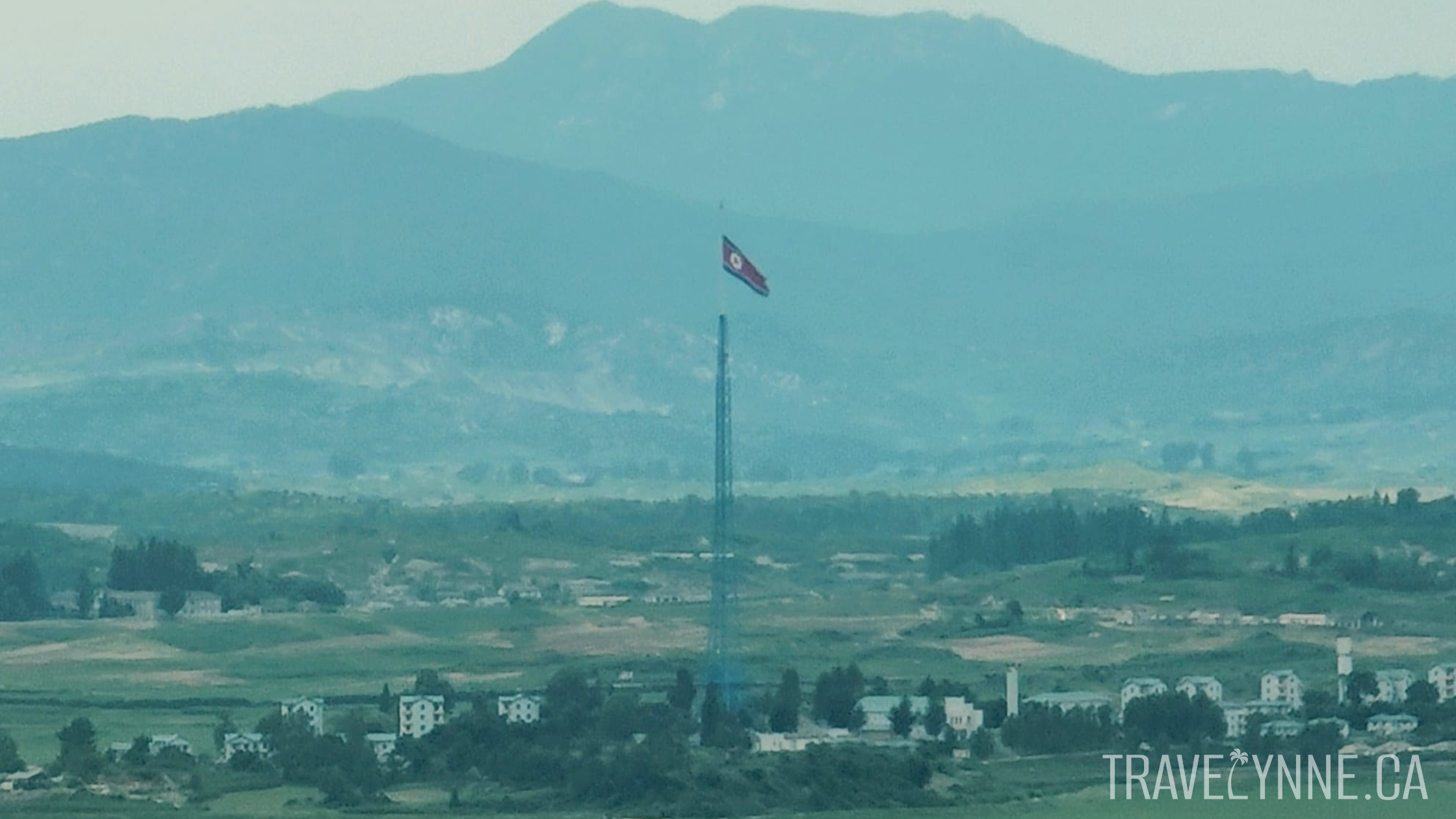
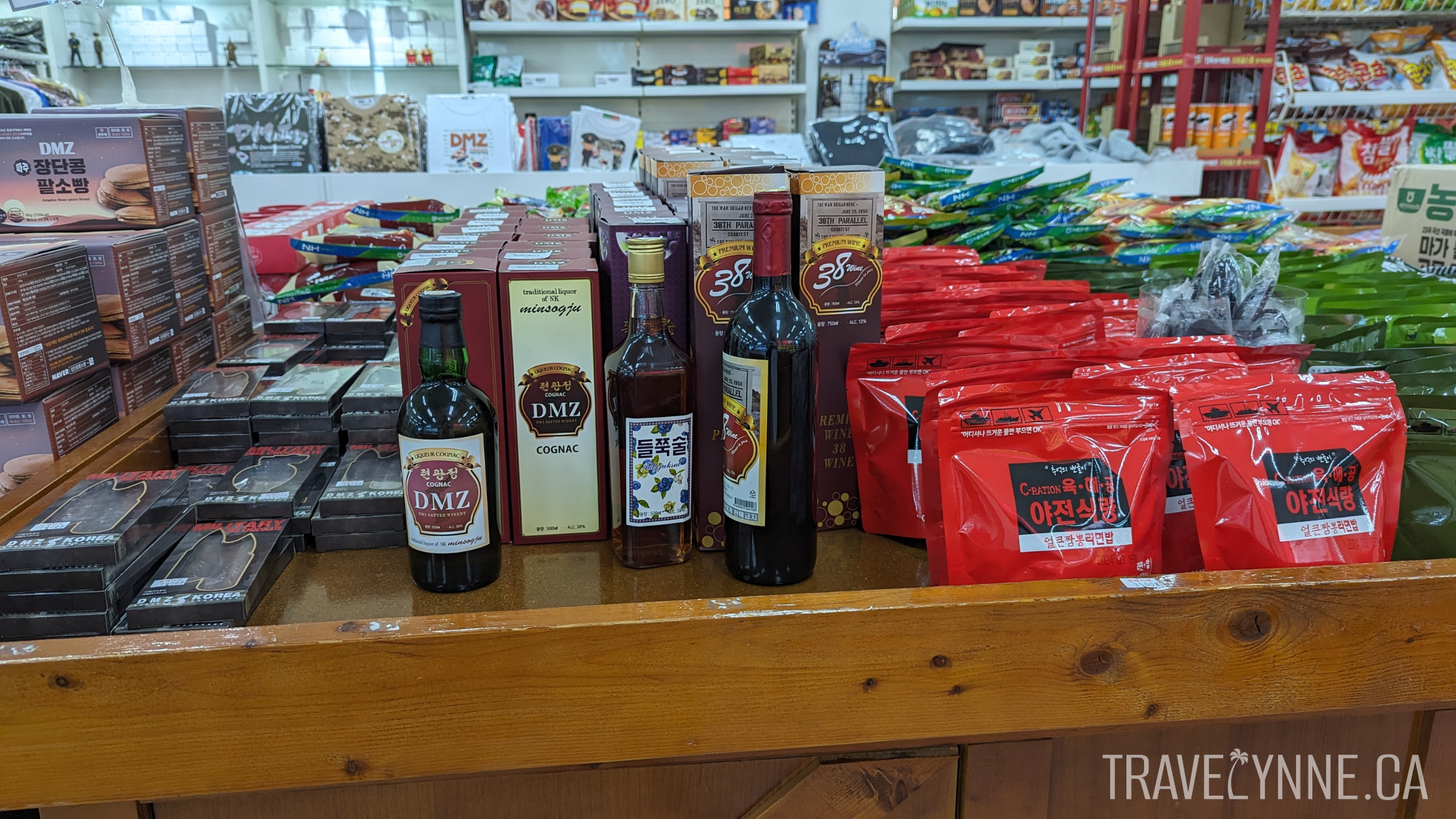
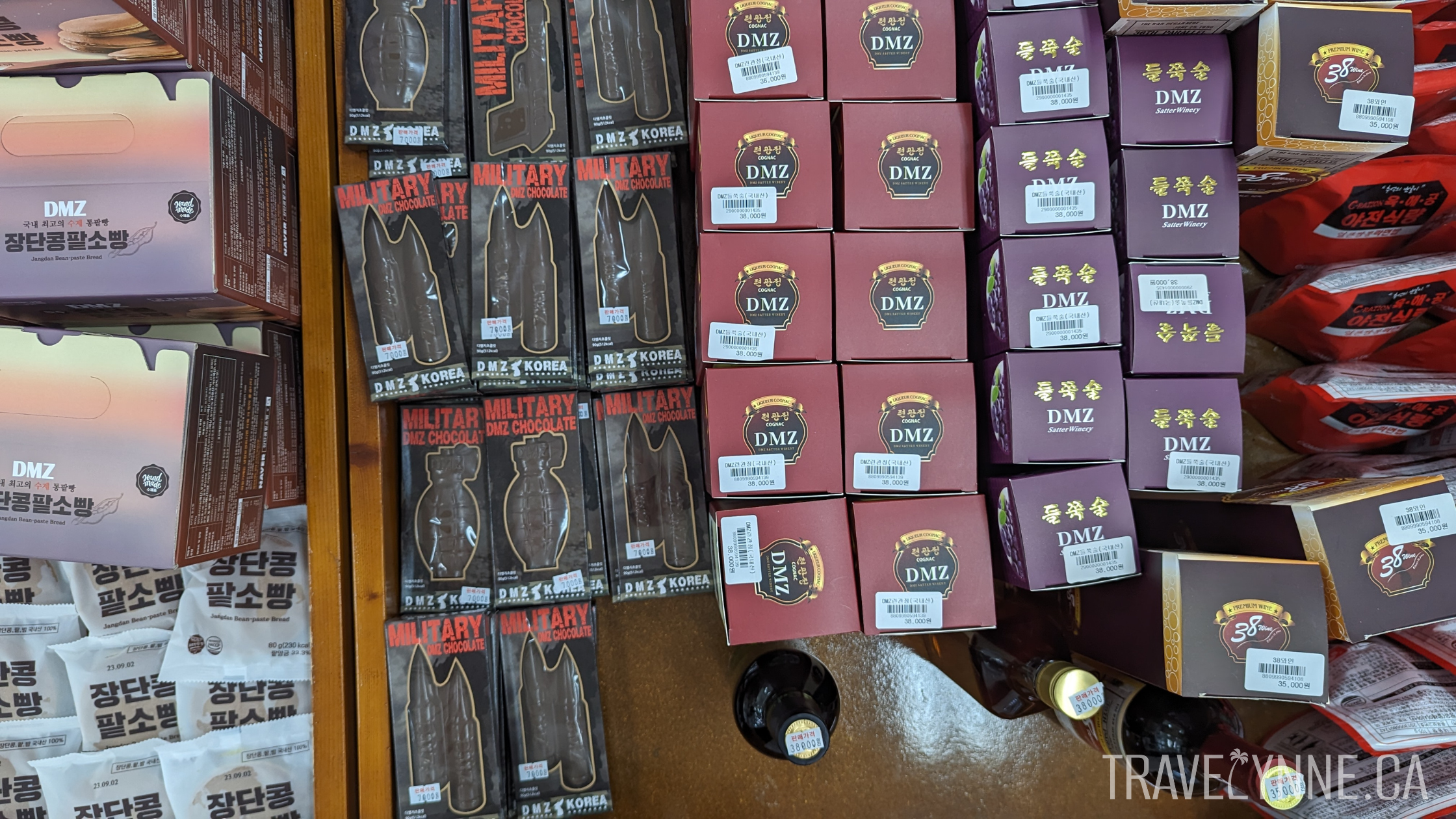
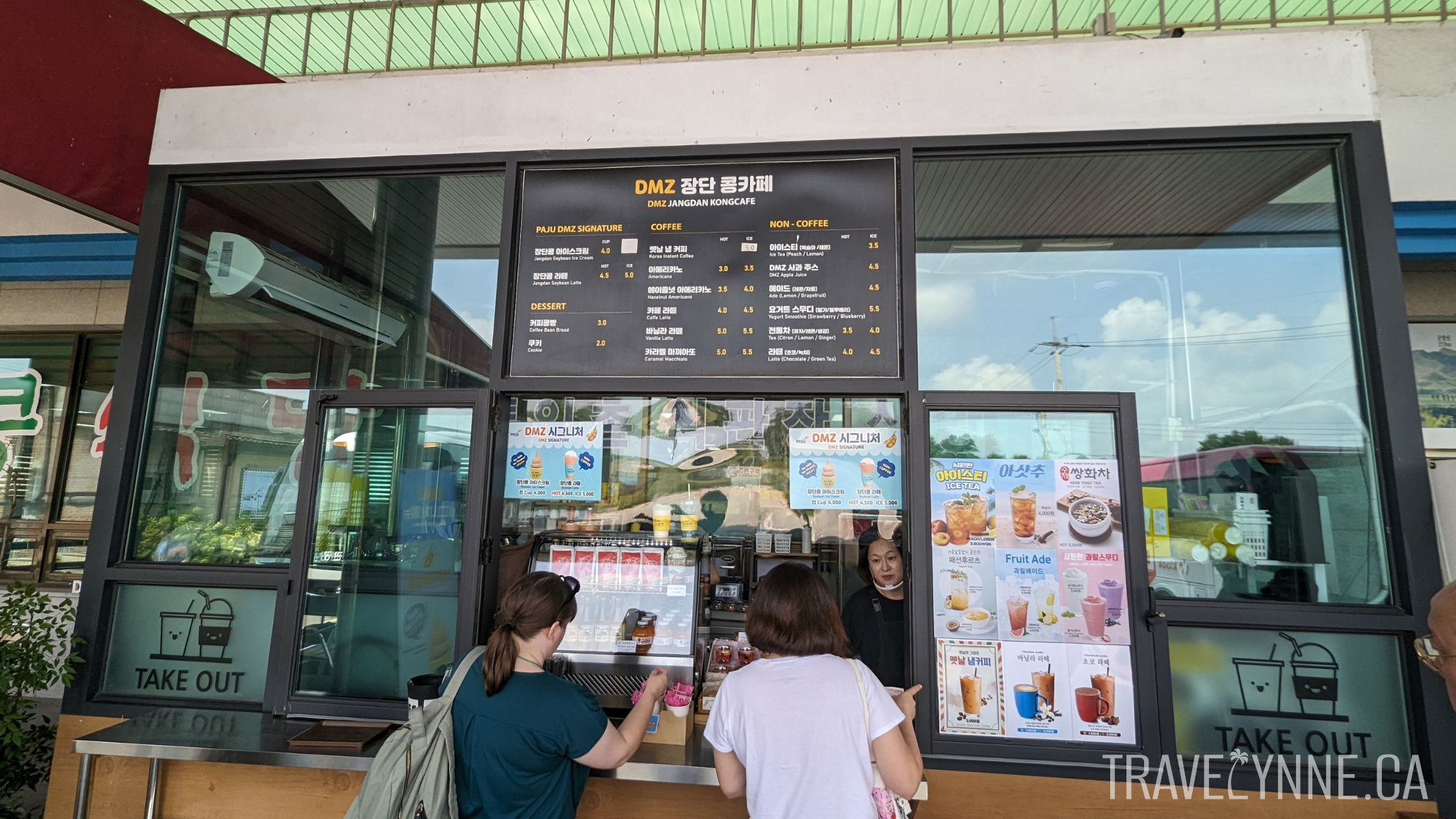
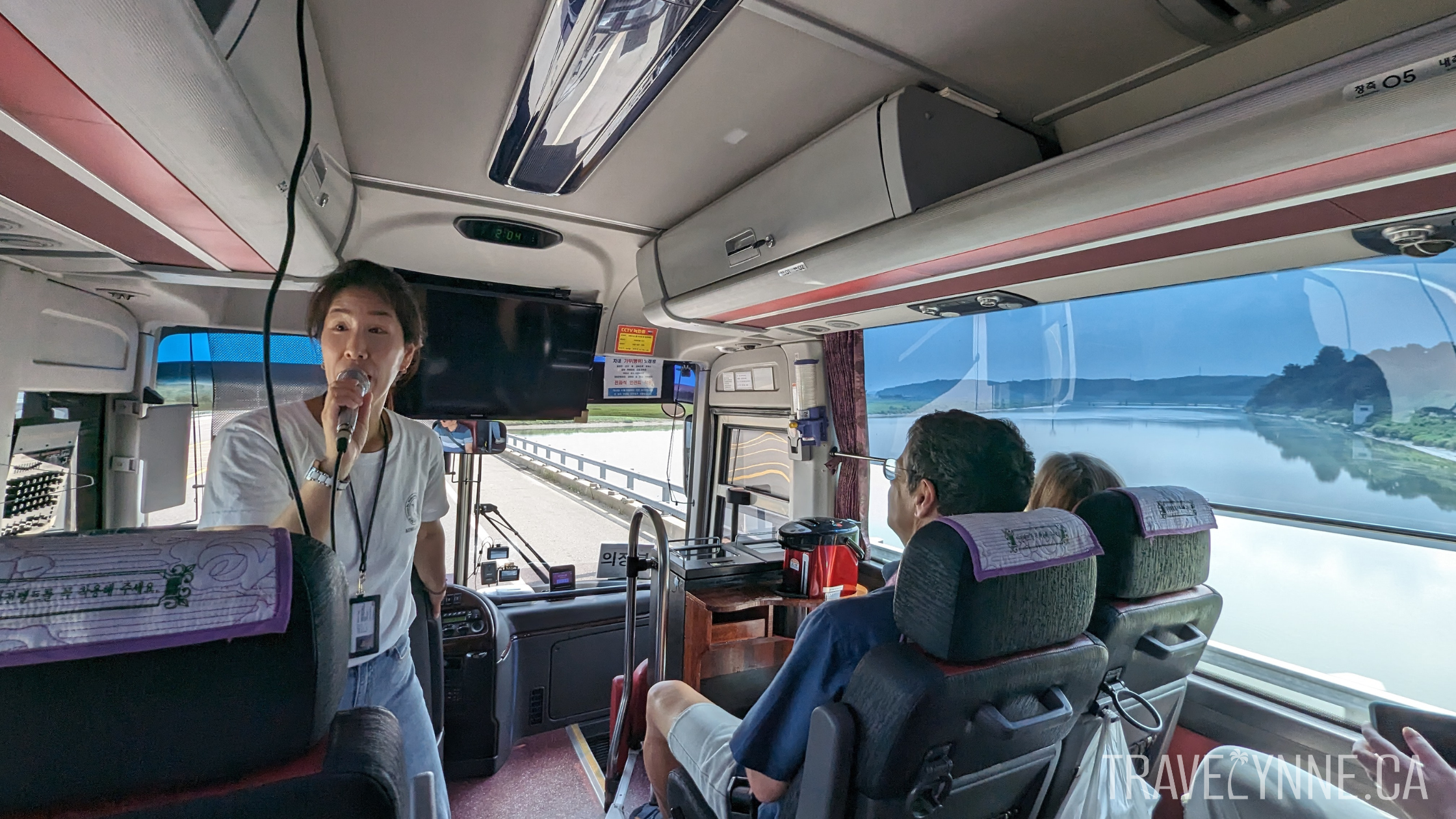
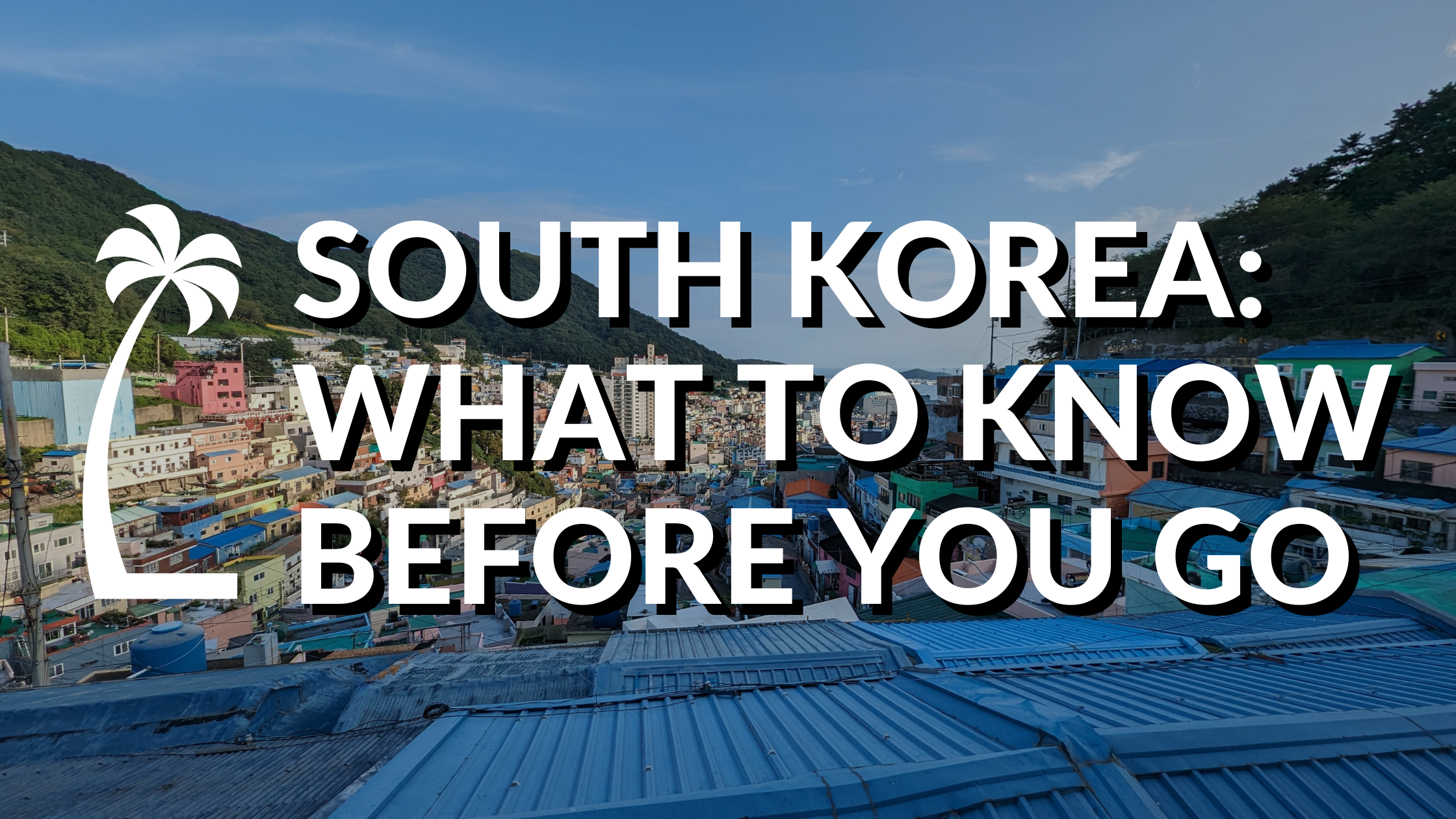
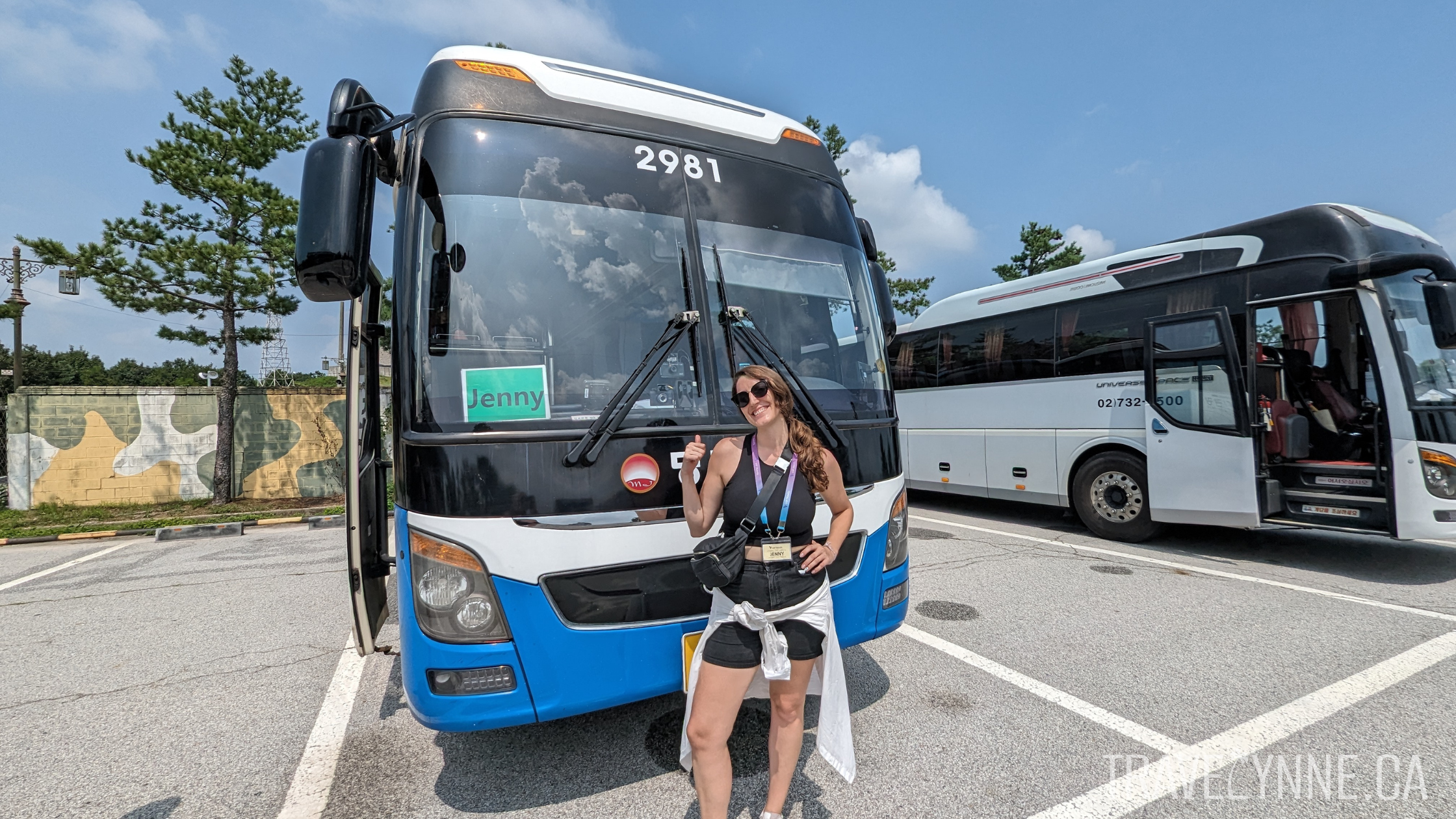





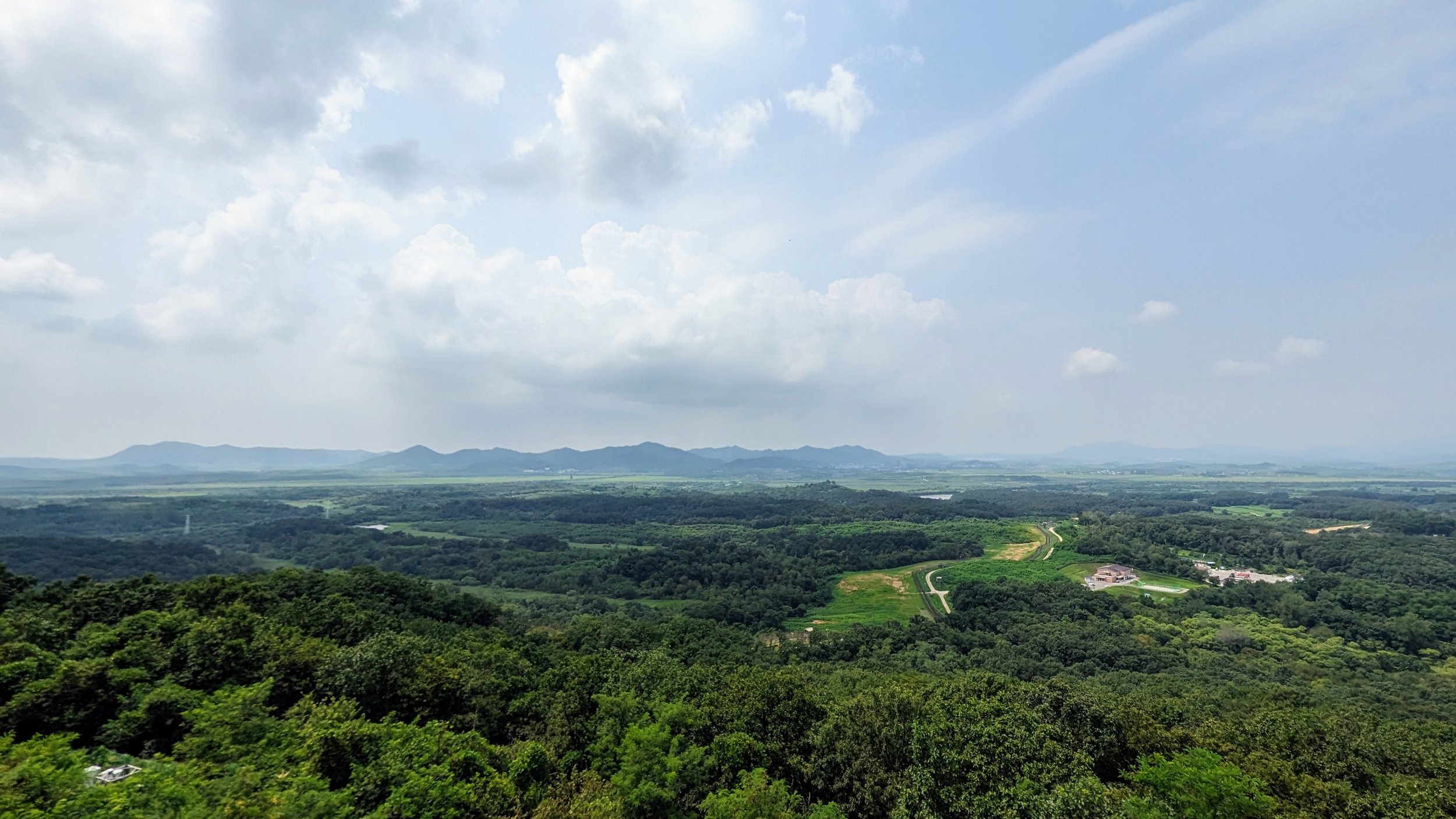
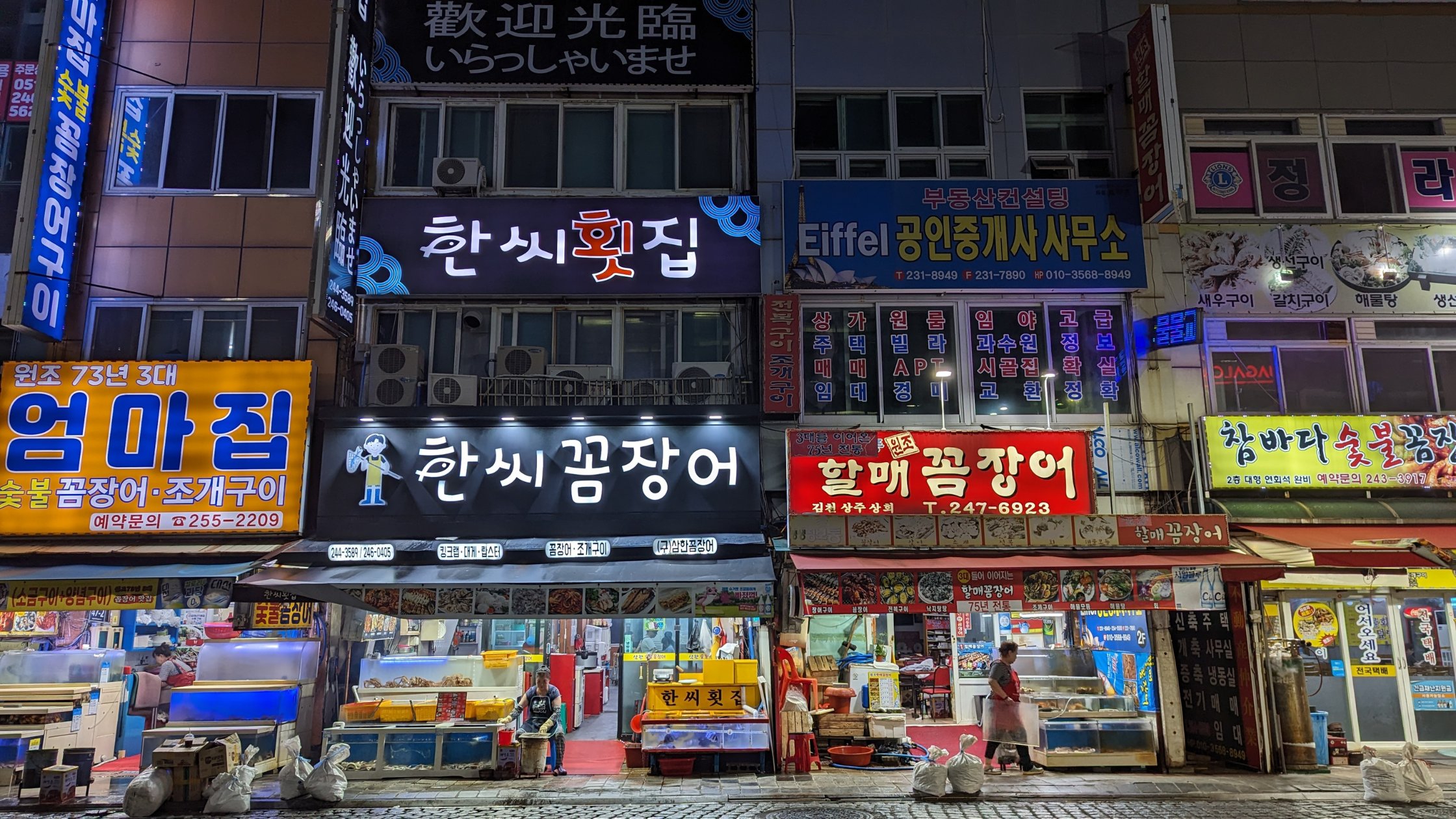
Get tips on free attractions, the best foods and how to navigate Nampo and Busan like a pro. Plus, grab my exclusive free map to explore Nampo's streets with confidence. Your adventure starts here!